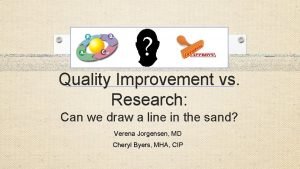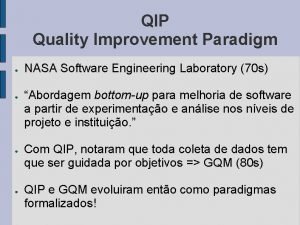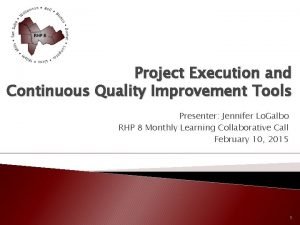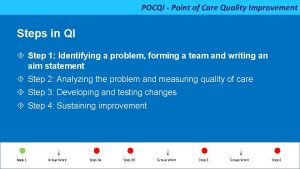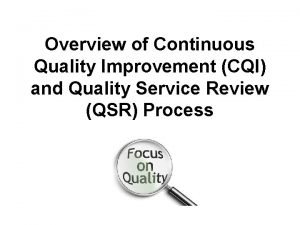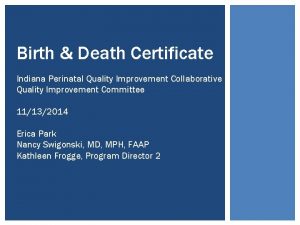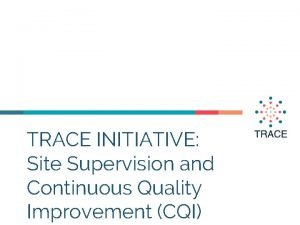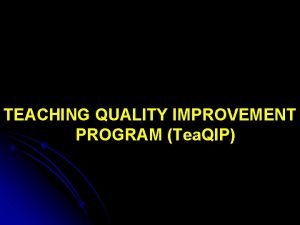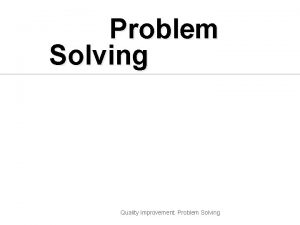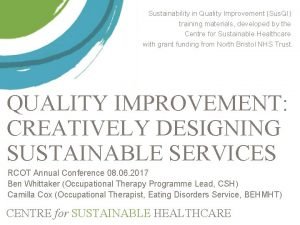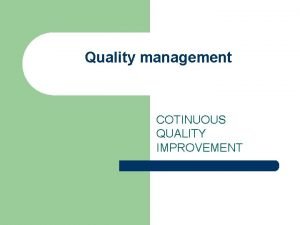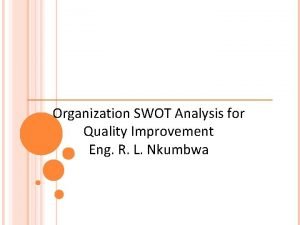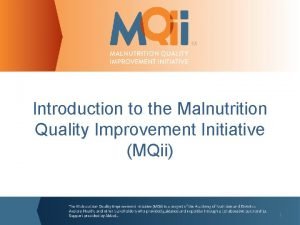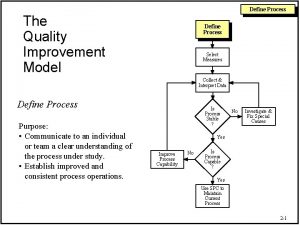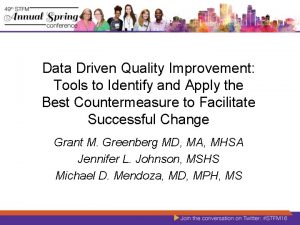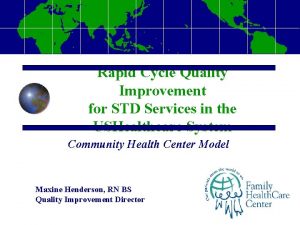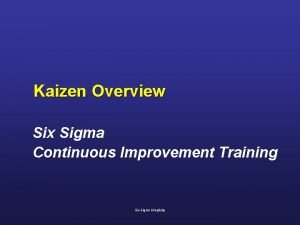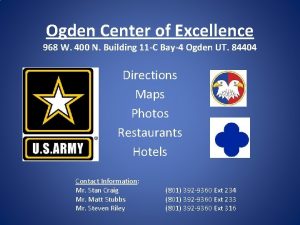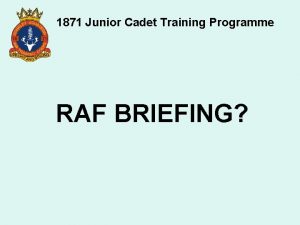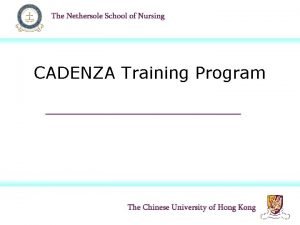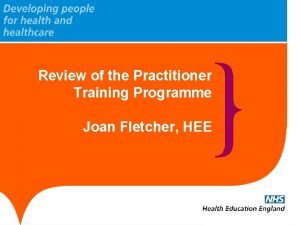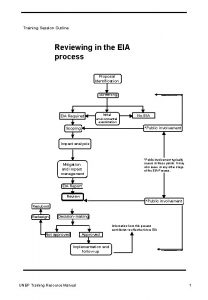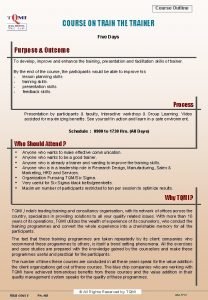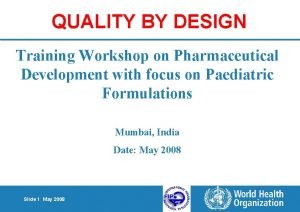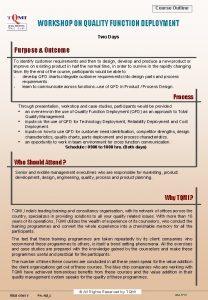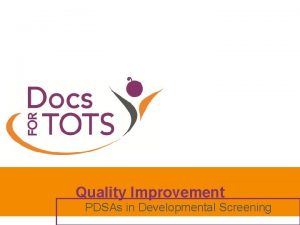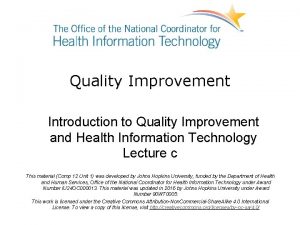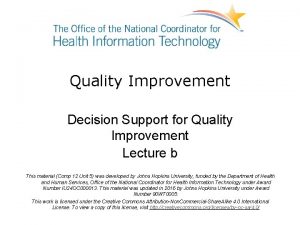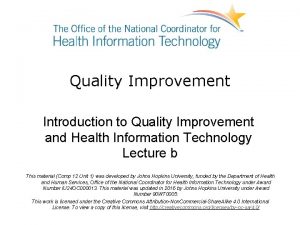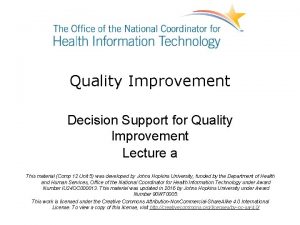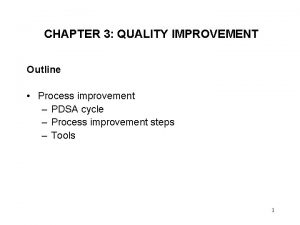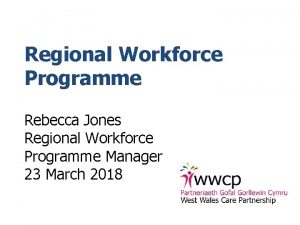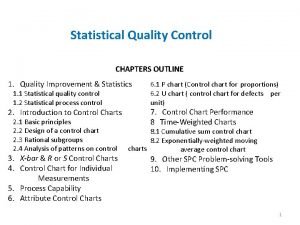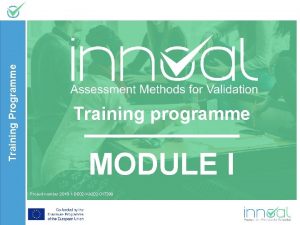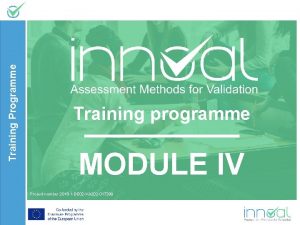Quality Improvement Day AIM Regional Training Programme Outline







































































- Slides: 71

Quality Improvement Day AIM Regional Training Programme

Outline of the day • What is ‘quality’ in healthcare? • Introduction to the IHI’s Model for Improvement • Some common improvement tools: – Asking ‘Why? ’ five times – Lean thinking – Process mapping • How to make changes that really work – Measurement for improvement – PDSA cycles – Organising an improvement project – people! • Further resources/finish

Duplication when a patient is admitted to MAU via ED

A few words of wisdom … • ‘Every system is perfectly designed to get the results it gets. ’ [Deming] • ‘If you always do what you've always done, you'll always get what you've always got. ’ [Krishna] • ‘Doing the same thing over and over again and expecting different results is insanity. ’ [Einstein]

What is quality in healthcare? (The Io. M’s 6 dimensions of quality) • • • Safe Effective Efficient (e. g. no waste) Timely (e. g. patient flow) Equitable (e. g. weekdays vs weekends) Person-centred


All improvement requires change, but not all changes lead to an improvement

Change in the NHS?

Five fundamental principles of improvement 1 Knowing why you need to improve 2 Having a feedback mechanism to tell you if you are improving 3 Developing a change that will result in an improvement 4 Testing a change before implementing it 5 Knowing when and how to make the change permanent


What are we trying to accomplish? What is the problem we are trying to solve?

Identifying problems – 5 -Why analysis problem identification tool: How to conduct 5 -Why analysis What is 5 -Why analysis? § By asking why (approxinately 5 times) you can peel away the layers of a problem Where to use 5 -Why analysis § To get to the true cause of the problem rather than deal with symptoms Why use 5 -Why analysis § A quick, simple tool to identify the source of a problem

Identifying Problems – 5 -Why analysis WHY? No regular checks for wear No equipment maintenance schedule Original trolley safety rail broken Patient unwell Spare had to be found Patients late in theatre – creates delays No porters available Waiting for trolley

Exercise: what’s the real problem?


Any questions at this point?

Problem: duplication when a patient is admitted to MAU via ED

‘LEAN Gone LEGO’

Lean thinking • Lean focuses on processes. It emphasises the total elimination of ‘waste’ and respect for people • It provides a way to do more with less effort/time/space and improve the service provided to the customer (patient) • Lean thinking: – Specifies ‘value’ from the patient’s standpoint – Identifies steps that add value, and eliminates those that do not – Puts the value added steps in sequence so things flow smoothly – Emphasises ‘pull’ (matching capacity and demand) – Pursues perfection through continuous improvement



‘Waste’ in healthcare 1. Unnecessary activity • • Tests/procedures Duplication 2. Inefficient use of ‘inventory’ • • eg beds (due to lack of ambulatory care, urgent outpatient diagnostics, same day surgery etc) Procurement* 3. Unnecessary waiting 4. Unnecessary movement of patients or staff 5. Defects (‘that’s just the way things are’) • Small defects magnify as they are passed down the line 6. Unnecessary processing • Using over-complicated processes when a simple one will do


Exercise: you are asked to do an LP on a medical ward. How long will it take you to assemble all the necessary kit? Outline the process.

Exercise

Health care processes Current variable, lots of autonomy not owned, poor if any feedback for improvement, constantly altered by individual changes, performance stable at low levels. Desired – variation based on clinical criteria, no individual autonomy to change the process, process owned from start to finish, can learn from defects before harm occurs, constantly improved by collective wisdom. Healthcare tends to look at and measure outcomes and not the reliability of the process leading to those outcomes. Terry Borman, MD Mayo Health System

Process mapping explained

Mapping the process – to describe the current process • What is mapping? – Forming a common understanding of the current process – Visual • Why use mapping? Mapping – Understanding – Other perspectives – Focus the Process – • When to map? – An aid to overcome change resistance – Present-future comparisons – Large group communication (picture = 1000 words)

Example

Mapping the process – value stream mapping Why use VSM? Consider the effort, expense and results below: 8 x Total Time = 8 x Baseline Value Added = 4 x = 50% Non Value Added = 4 x r de r a Total Time = 6 x Double the work speed Half the NVA time H g kin ter r Non Value Added = 4 x Wo Fas or Total Time = 6 x Value Added = 2 x = 33% g Value Added = 4 x = 66% Non Value Added = 2 x W kin r o Sm r te r a

Mapping the Process – You have a map, what next? Effectively using what your map tells you: • What does the map say? • • • A focus for ‘root cause analysis’ Looking for visual messages Focus on non value-added • Action based on your process map • • Quick and easy, high impact Resource, timing/when

Don’t forget to talk to patients! (Their perspective is often different)

t u B … t s r fi


Introduction to measurement for improvement

Simplicity of presentation Variation Asking the right question Validation


‘You cannot fatten a cow by weighing it. ’ (Proverb) Improvement is not about measurement, but … How do we know if a change is an improvement? ‘If you can’t measure it, you can’t improve it’

Indicators and measurement What are indicators and why are they important? - succinct measures that describe as much about a system in as few points as possible - help understand a system, compare it and improve it Three key roles of measurement: - understanding – how does a system work - performance – how is a system performing to standard - accountability – how are we answerable to external stakeholders

Outcome measures – Impact on the patient and show the end result of your improvement work – Example: the MRSA rate or the number of falls Process measures – Reflect the way your systems and processes work to deliver the outcome you want – Example: % compliance with hand hygiene Balancing measures – Reflect what may be happening elsewhere in the system as a result of the change. This impact may be positive or negative. – Example: if you have implemented changes to reduce your post-operative length of stay, you also want to know what is happening to your post operative readmission rate. If this has increased then you might want to question whether, on balance, you are right to continue with the changes or not.

Defining your measures • Do we mean the number of complaints received? • Or, the percentage of patients that complain? • Or, the number of complaints per patient?

What could we measure here? How could we tell whether we have reduced duplication when a patient is admitted to MAU via ED?

Understanding natural variation

Variation Common cause variation – the normal, everyday, inevitable (and usually unimportant) variation which is intrinsic and natural to any system - random Special cause variation - the more important variation which is indicative of something special happening and which calls for a fuller understanding and often action assignable



Problem analysis • Often we focus on the immediate symptom instead of the underlying cause • Find the change that has caused a variation in performance • Common pitfall: jumping to conclusions – looking for a scapegoat What happened? When? Where? How much? (Note: Avoid “Who did it? ”) Deviation

Any questions at this point?

Making changes – PDSA cycles • • • Plan Do Study Act Start small!


Repeated PDSA cycles work towards the AIM Act Plan Study Do en v i r d ta nge a D cha HUNCHES IDEAS Need to start small!

Brainstorming • Brainstorming can help us think up ideas without hasty judgement • Can help you clarify the issue and think up new ideas so you can move on to the next steps • Establish the purpose and topic • Call out ideas NO analysis yet • Freewheeling is welcome: the wilder the better • Think up at least 20 -30 ideas: quantity not quality • Think BIG, think BLUE SKY

A hierarchy of improvement What to look at and when? 1. Aim first to eliminate the non value-adding (or special cause variation) activity by getting rid of it completely 2. If you can’t eliminate it, can you reduce the size (or impact) of The non value-adding activity? 3. If you can’t reduce it, can you combine it with another activity? NOTE – ensure that key stakeholders are engaged (excuse the jargon) to maintain points of reference.


Brainstorming session

Organising an improvement project – it’s all about people!

Where do improvements come from? § ‘Top down’ national initiatives, Trust driven § Bottom up – an individual or team identify that a process could be improved § Problem solving – data shows that a process is not consistently delivering to expected/required level § Quality improvement – enhancing patient care


Gaining support in the early stages Selecting a Sponsor Ensure: § Is supportive of the aims § Sufficient influence with stakeholders § Authority to make key decisions § Able to commit appropriate time § Provides challenge § Provide interface between improvement, wider Trust initiatives and priorities

Gaining support in the early stages Form a small group with: § § § Credibility Skills Connections Authority Reputation The small group MUST include the sponsor This group ‘sense check’ the initial idea

Projects – linked and organised activities that deliver a specific result Generally projects have specific requirements: § Clear and agreed objective § Defined life span § Temporary - used for: § doing something new § a one-time effort Time-quality-cost triangle

Resources Identifying solutions High Low CONSIDER LAST DO FIRST Easy Difficult Ease of implementation

Action planning SINGLE PROBLEM STATEMENT and ASSOCIATED GOAL Goal 1 Intended outcome (PI or measurement) Actions By who a) b) c) 2 3 4 5 Be S. M. A. R. T! By when Impact (high, medium, low)


Sustainability • Sustainability = a newly improved process continues over time, because ‘it’s the way things are done around here’ and does not return to the old processes • 1: 3 changes in healthcare don’t stick – why? – Not clear – Not led – Not communicated – Not measured – Not whole system

Spread • Make it easy for people to do the right thing (good processes) • Reminding does not work! • Use SOPs / documentation • Re-design processes / nudge people • Identify roles and responsibilities • Induction, education and training

Keep it simple, keep it clear Einstein said, ‘Any intelligent fool can make things bigger, more complex … It takes a touch of genius - and a lot of courage - to move in the opposite direction. ’

It is often a convoluted journey to get to where you want to be …

Any questions at this point?

Examples and useful resources

Quality Improvement Day Many thanks for participating! Don’t forget to fill in the evaluation forms …
 Day 1 day 2 day 3 day 4
Day 1 day 2 day 3 day 4 Quality assurance cycle in nursing
Quality assurance cycle in nursing Compliance vs quality
Compliance vs quality Objectives of rch programme
Objectives of rch programme Day 1 day 2 day 817
Day 1 day 2 day 817 Jhm irb
Jhm irb Qsen examples in nursing
Qsen examples in nursing Quality improvement paradigm
Quality improvement paradigm Continuous quality improvement plan example
Continuous quality improvement plan example Pocqi ppt
Pocqi ppt Define continuous quality improvement
Define continuous quality improvement Efmd quality improvement system
Efmd quality improvement system Indiana perinatal quality improvement collaborative
Indiana perinatal quality improvement collaborative Cqi action plan template
Cqi action plan template Tea quality improvement
Tea quality improvement Quality improvement
Quality improvement Sustainability in quality improvement
Sustainability in quality improvement Cotinuous
Cotinuous Quality improvement
Quality improvement Juran 10 steps to quality improvement
Juran 10 steps to quality improvement Swot analysis for quality
Swot analysis for quality Malnutrition quality improvement initiative
Malnutrition quality improvement initiative Quality improvement
Quality improvement Data driven quality
Data driven quality Rapid cycle quality improvement
Rapid cycle quality improvement Crosby's fourteen steps to quality improvement
Crosby's fourteen steps to quality improvement Kaizen prioritization
Kaizen prioritization Midday meal scheme kerala
Midday meal scheme kerala Wmo regional training centres
Wmo regional training centres Tasfaa regional training
Tasfaa regional training Wmo regional training centres
Wmo regional training centres Western regional training center
Western regional training center Raf training programme
Raf training programme Cadenza training programme
Cadenza training programme Practitioner training programme
Practitioner training programme Example of quote sandwich
Example of quote sandwich Quality assurance vs quality control
Quality assurance vs quality control Pmp quality vs grade
Pmp quality vs grade What are quality standards in project management
What are quality standards in project management Basic concept of quality management
Basic concept of quality management Quality gurus and their contribution
Quality gurus and their contribution Old quality vs new quality
Old quality vs new quality Family sis schoolmax
Family sis schoolmax Oceans apart day after day
Oceans apart day after day Day to day maintenance
Day to day maintenance As your room gets messier day by day, entropy is
As your room gets messier day by day, entropy is Tomorrow i dont know
Tomorrow i dont know Romeo and juliet timeline review answer key
Romeo and juliet timeline review answer key Growing day by day
Growing day by day Observation of seed germination day by day
Observation of seed germination day by day Conclusion of seeds
Conclusion of seeds Observation of plant growth day by day
Observation of plant growth day by day I live for jesus day after day
I live for jesus day after day One day casting crowns
One day casting crowns Day one day one noodle ss2
Day one day one noodle ss2 Dayone dayone ss2
Dayone dayone ss2 Army aar questions
Army aar questions The mandt system chapter 1 2 3- relational section answers
The mandt system chapter 1 2 3- relational section answers Training session outline
Training session outline Training presentation outline
Training presentation outline Ladder outline
Ladder outline Customer service training program outline
Customer service training program outline Train the trainer training program outline
Train the trainer training program outline Analytical thinking training course outline
Analytical thinking training course outline Case study on ethical issues in business
Case study on ethical issues in business Quality by design approach
Quality by design approach Cpar example
Cpar example House of quality training
House of quality training Data quality training
Data quality training Training is expensive without training it is more expensive
Training is expensive without training it is more expensive Metode of the job training
Metode of the job training Aggression replacement training facilitator training
Aggression replacement training facilitator training





